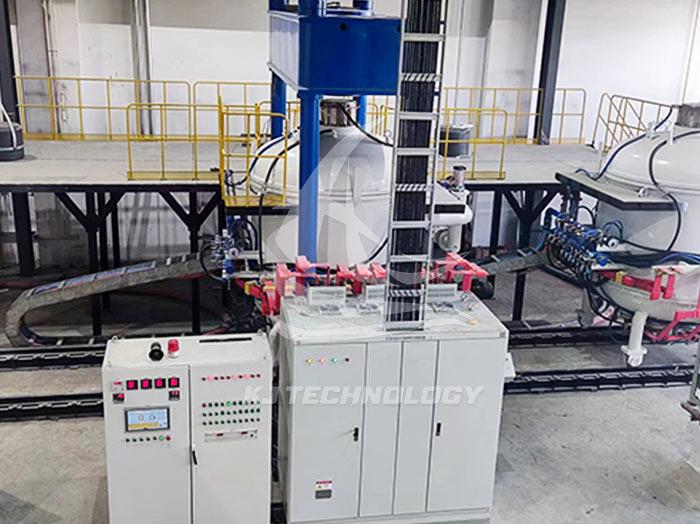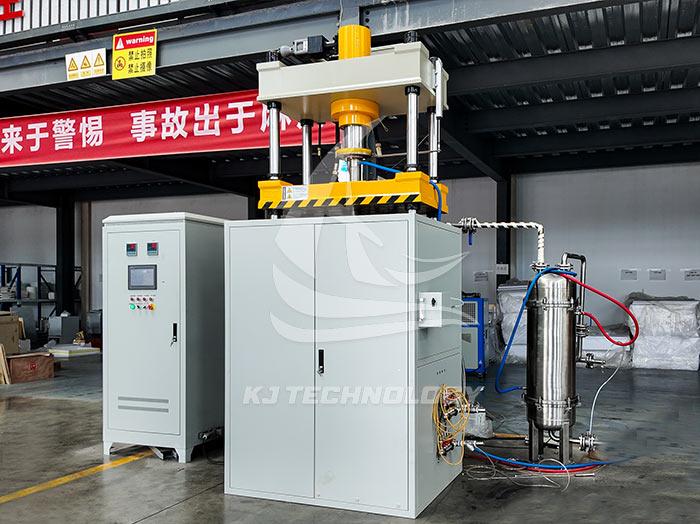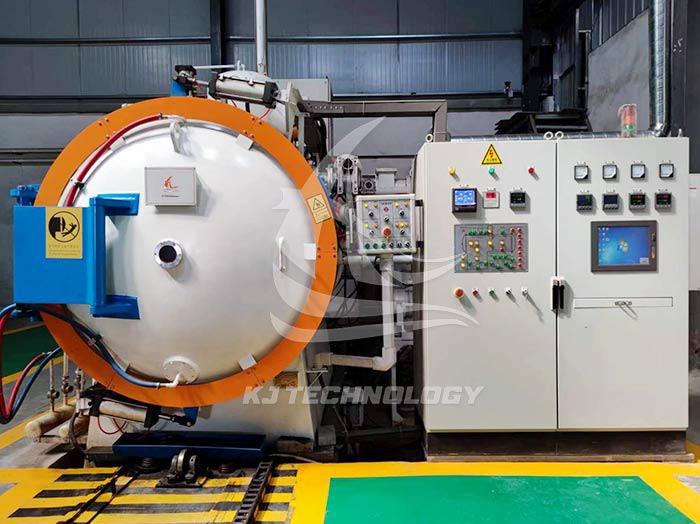Application of laboratory graphite vacuum furnace in the ceramic industry
 08-06-2025 Author: KJ technology
08-06-2025 Author: KJ technology
The laboratory graphite vacuum furnace is widely and crucially used in the ceramic industry, which significantly improves the performance and preparation efficiency of ceramic materials by providing high temperature, high vacuum or controllable atmosphere environment. The specific application scenarios and advantages are as follows:
1. Core application scenarios
High performance ceramic sintering
Material types: advanced ceramic materials such as zirconia, silicon nitride, and silicon carbide.
Technological advantages:
Vacuum environment: Avoid reacting materials with oxygen and water vapor at high temperatures, prevent oxidation or decomposition, and ensure material purity. For example, zirconia ceramics can avoid abnormal grain growth and improve fracture toughness during vacuum sintering.
Temperature uniformity: The graphite furnace is matched with a reasonable layout of heating elements to achieve uniform temperature distribution inside the furnace (temperature difference ≤ ± 5 ℃), avoiding local overheating that may cause material cracking or deformation.
Controllable atmosphere: By filling inert gases such as nitrogen and argon, the partial pressure of the atmosphere inside the furnace is adjusted to optimize the material densification process. For example, sintering silicon nitride ceramics in a nitrogen atmosphere can promote nitriding reactions and increase material hardness.
Preparation of Ceramic Matrix Composite Materials
Material types: carbon fiber reinforced ceramic matrix composites (C/C-SiC), ceramic particle reinforced metal matrix composites, etc.
Technological advantages:
High temperature stability: Graphite heating elements maintain mechanical strength above 1800 ℃, meeting the requirements of high-temperature infiltration and reaction sintering of composite materials.
Chemical inertness: Graphite has no chemical reaction with ceramic matrix and reinforcing phase, avoiding material contamination. For example, in the preparation of C/C-SiC composite materials, graphite molds can withstand high-temperature silicon melt infiltration without reacting with silicon.
Structural support: Graphite brackets, trays, and other structural components can support complex shaped samples and meet the sintering requirements of composite material irregular parts.
Graphitization treatment of ceramic materials
Material types: graphite ceramics, carbon/carbon composite materials, etc.
Technological advantages:
High vacuum degree: The pressure inside the furnace can be controlled at 10-3-10-5Pa to avoid the reaction between carbon atoms and impurities during the graphitization process, and improve the conductivity and thermal conductivity of the material.
High temperature environment: The temperature can reach 2500 ℃, promoting the orderly arrangement of carbon atoms and forming graphite crystal structure. For example, after graphite treatment, the bending strength of carbon/carbon composite materials can be increased by more than 30%.
2. Technological advantages and industry value
Improve material performance
Density reduction: Vacuum sintering can eliminate internal pores in materials, achieving a density of over 99% and significantly improving hardness and wear resistance.
Grain control: Accurate temperature control (± 1 ℃) can suppress abnormal grain growth and optimize the microstructure of materials. For example, nano ceramics sintered in a graphite vacuum furnace can maintain a grain size of ≤ 100 nm and increase strength by 50%.
Surface quality: Vacuum environment reduces gas adsorption, avoids material surface oxidation or pollution, improves smoothness, suitable for high-end applications such as optical ceramics and semiconductor ceramics.
Reduce preparation costs
Energy efficiency: Graphite has a low coefficient of thermal expansion (only 1/3~1/4 of metals), reducing structural stress caused by temperature changes, extending equipment life, and reducing maintenance costs.
Material utilization rate: Graphite molds are reusable and easy to process into complex shapes, reducing material waste. For example, in the preparation of ceramic bearings, the service life of graphite molds can be more than three times that of metal molds.
Replacing precious metals: Graphite heating elements can replace high-temperature alloys such as tungsten and molybdenum, reducing equipment manufacturing costs by more than 30%.
Promote technological innovation
Multi functional integration: By integrating temperature sensors and atmosphere control systems, intelligent sintering processes can be achieved. For example, programmable temperature control curves can meet the segmented sintering requirements of different ceramic materials.
Cross industry collaboration: Graphite vacuum furnace technology can be transferred to fields such as aerospace and new energy, promoting the application of ceramic based composite materials in engine hot end components and lithium battery negative electrode materials.
3. Typical case
Ceramic turbine blades for aircraft engines
Process: Silicon carbide ceramic matrix composite blades are sintered using a graphite vacuum furnace at 1800 ℃ under a nitrogen atmosphere.
Effect: The temperature resistance of the blades reaches 1500 ℃, which is 40% lighter than metal blades, and the creep resistance is improved by 2 times, significantly improving the engine thrust to weight ratio.
Semiconductor ceramic packaging substrate
Process: Sintering alumina ceramic substrate in a graphite vacuum furnace at 1600 ℃ under high vacuum.
Effect: The thermal conductivity of the substrate reaches 25 W/(m · K), the coefficient of linear expansion matches the silicon chip, reduces packaging stress, and improves device reliability.
Artificial joint ceramic implant
Process: Sintering zirconia ceramic femoral heads using a graphite vacuum furnace at 1500 ℃ under argon protection.
Effect: The bending strength of the material reaches 1200 MPa, and the wear resistance is 10 times higher than that of metal, significantly extending the service life of the implant.








